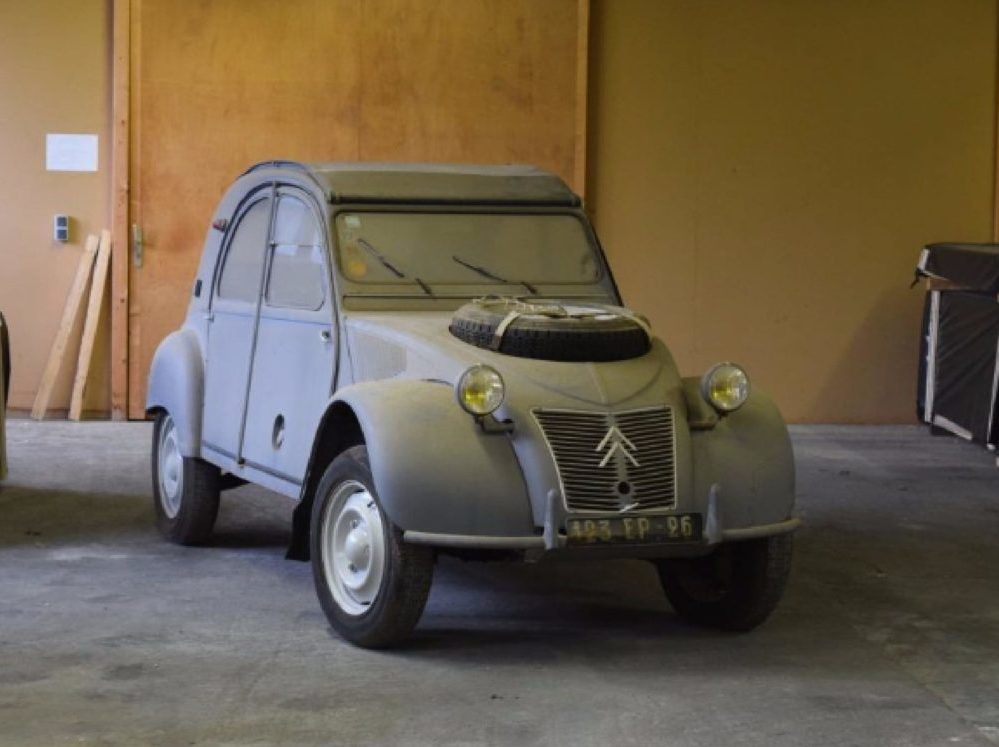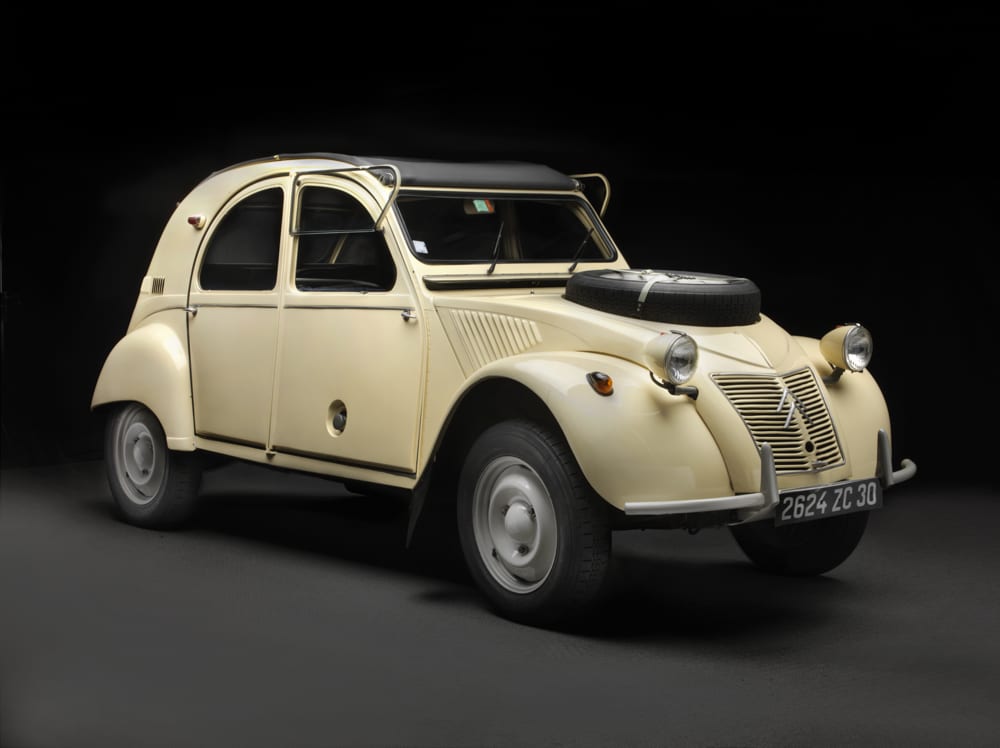Tech Specs
Twin horizontally-opposed two-cylinder air-cooled engines, 425 ccs, 12 bhp at 5300 rpm.
Before/After
1961 Citroën


About the 1961 Citroën 2CV Sahara
Twin-engined cars are rare. Prior to the First World War, a few were produced principally to offer a fail-safe system should the first motor fail. Decades later Citroën chose the approach as the simplest way to make an all-terrain vehicle without designing a four-wheel drive system.
The twin engines in the display car came from the Deux-Chevaux (2CV), the post-WWII ultra-rudimentary car that was Citroën’s interpretation of the principles Henry Ford used to put the world on wheels with the Model T. The units, each with its own gearbox, were installed up front and in the extensively modified trunk area in the rear, the engine in the latter to be shifted into neutral as a fuel saving measure for highway driving. There were two ignition and starter buttons; twin fuel tanks were located under the seats. The clutches were linked hydraulically in order to be worked with one pedal.
On the face of it, a 4×4 2CV might seem the answer to a question nobody would have asked. In the late fifties most people in the marketplace thought four-wheel drive was only for the irrevocably adventurous, if they even knew what it was. But Citroën market research had suggested a small utilitarian vehicle with powered rear wheels would be ideal for oil exploration in desert areas. And the company knew something about desert travel. During the twenties Citroën had collaborated with Adolphe Kégresse in the building of half-track vehicles that made the first motorized Sahara crossing.
The display car is rare for having survived – few of the 694 Saharas built have – and for having been used as intended by an Israeli oil company. More Saharas, it seems, were bought by the Spanish police or by Swiss doctors who valued their added traction for rescue missions on ice-covered Alpine roads. This, again, was not without precedent. Citroën’s Kégresse had proven a popular way to get skiers to mountain tops before the invention of the ski lift.











